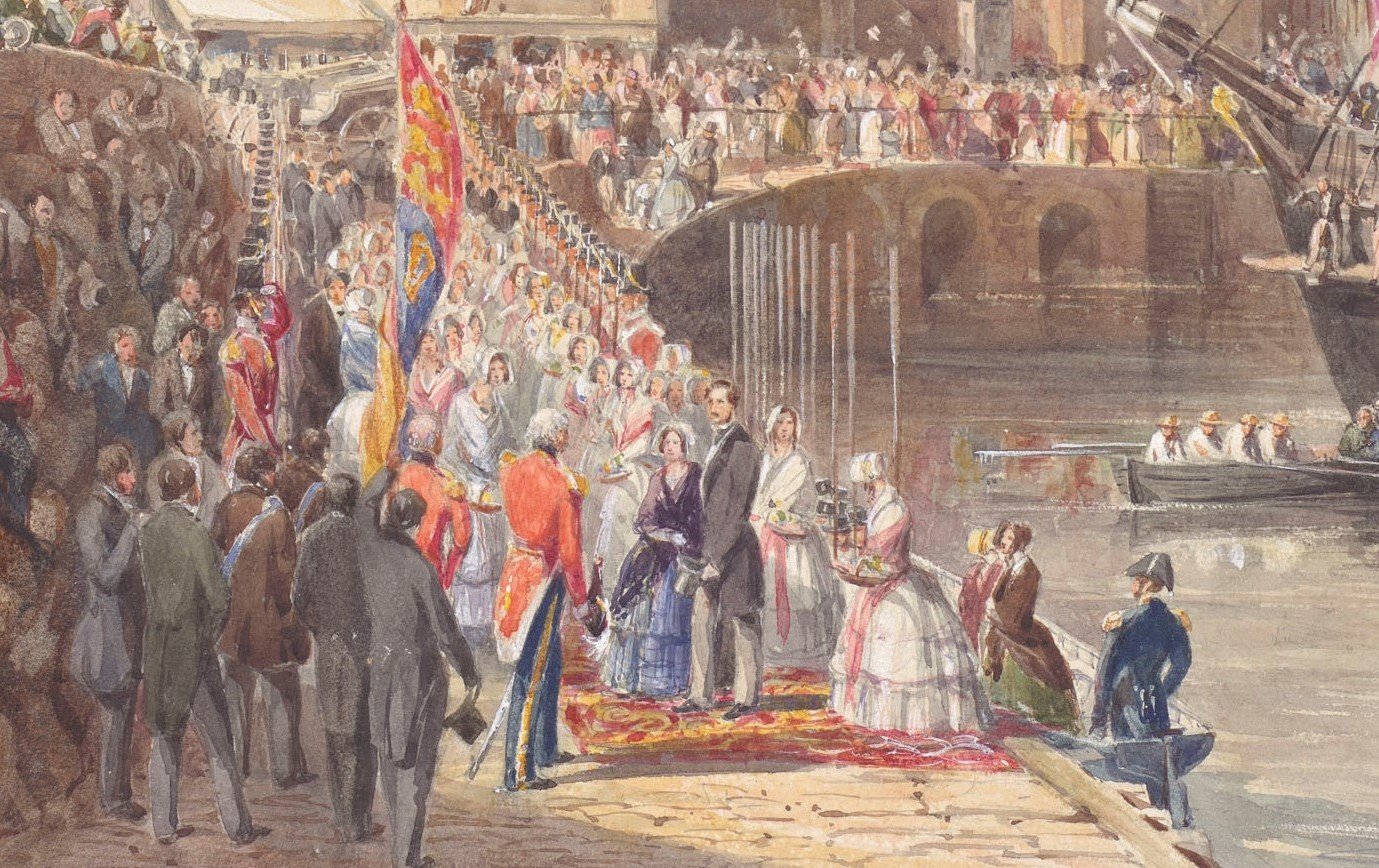
Victorian Fashion
Deputy Surveyor of The Queen’s Pictures Anna Reynolds examines this spectacular watercolour through the lens of mid-nineteenth century fashion in France and Britain
When Queen Victoria visited Paris for the first time in 1855 at the invitation of Emperor Napoleon III, she and her husband Prince Albert took with them a carefully-curated wardrobe. Though at the time French and British men and women wore similar styles of clothing, the British Royal Family would have checked in advance what attire was suitable for such important occasions as the ball and supper thrown by the Empress Eugénie in honour of her guests on 25 August at the Château de Versailles. This colourful, detailed watercolour records this special event, and was commissioned by the Emperor and Empress as a souvenir for the British queen.
For the female guests, an event such as this required a glamorous dress. Although women’s day dresses would usually have been high-necked at this date, for eveningwear it was appropriate to model a much more revealing neckline, and so here there are lots of low, wide necklines, some of which are accessorised with a lace bertha.
We can see that the women in this watercolour take up much more physical space then the men; their wide skirts would, in 1855, still have been worn with petticoats (rather than a crinoline) and the bodices have a pointed waistline at the front. Synthetic aniline dyes were not yet invented, so even though some of these dresses are brightly coloured, they are not in the harsh shades – notably violet – that would become fashionable in the 1860s.
Instead we can see dresses of soft peach, yellow and sky blue along with white, which remained a fashionable colour, in a variety of different fabrics such as brocade, damask and tulle. Most of the women wear their hair looped over the ears and arranged into a style known as à l'impératrice after the Empress, set with flowers and ribbons, although some have looser ringlets.
While men could wear a dark coat on such an occasion, most of those pictured in this watercolour have chosen the alternative option of wearing uniform – which could be either military or civil, the former identified by its epaulettes on the shoulders.
Just indicated in the doorway at the back are the Napoleonic elite ceremonial guard, their uniform consisting of pale-blue tunics, a cuirass decorated with the imperial eagle, white knee breeches tucked into black boots and helmets with tall horse-hair plumes.
Queen Victoria later described the evening in her diary as ‘quite one of the finest & most brilliant sights we ever witnessed’.







